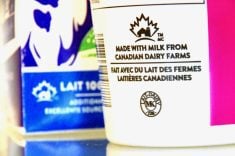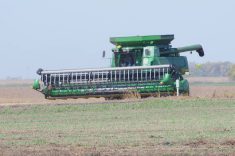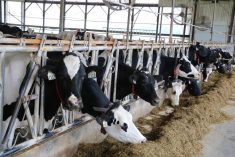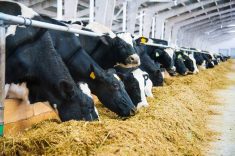Canadian dairy farmers are getting smaller when it comes to their impact on the environment, says a study done for Dairy Farmers of Canada by Groupe AGECO.
The Canadian dairy sector has achieved one of the lowest carbon footprints in the world and every litre of milk it produces creates one-third of the greenhouse gas emissions that the global average dairy farm generates, says Groupe AGECO. It’s a Quebec City-based company that studies the socio-economic, political and strategic issues facing the agri-food and natural resources sectors.
Read Also

Mazergroup’s Bob Mazer dies
Mazergroup’s Bob Mazer, who helped grow his family’s company into a string of farm equipment dealerships and the main dealer for New Holland machinery in Saskatchewan and Manitoba, died July 6 from cancer.
The study compared the sector’s environmental performance in 2016 compared to 2011 looking at its carbon footprint, water consumption, and land use.
“Results indicate that environmentally friendly farm practices, such as more crop rotations, better feed, reduced tillage and precision agriculture techniques, as well as increased milk production per cow explain improvements in those environmental profiles,” their report states.
DFC president Pierre Lampron said the report highlights how the sector’s already-light footprint continues to steadily decrease.
“I’m really proud of the work done by all Canadian dairy farmers in adopting environmentally friendly farming practices,” he said.
The study said the sector’s carbon footprint dropped by seven per cent, its water consumption by six per cent and land use associated with milk production by 11 per cent during the five years studied. Canadian milk production was responsible for generating only 1.3 per cent of Canada’s total GHG emissions.
Increased milk production per cow is the main driver to explain the environmental improvements, the study said. While cows in 2016 consumed approximately nine per cent more feed than in 2011, higher levels of milk production resulted in lower GHG emissions per kilogram of milk.
Apart from changes in the quantities of feed intake, the proportion of corn silage in the cows’ ration has increased slightly in 2016 at the expense of feeds with a higher carbon footprint such as corn, commercial feed, hay, and haylage. While this change contributed to reduce GHG emissions related to feed production, its influence on the carbon footprint is less significant than the increased milk production, the report says.
The results used in the study came from an online survey sent to dairy farmers in 2017, the study said. The results show “a significant number of them have optimized and updated several of their practices in the last five years.”
They include more frequent emptying of manure storage to reduce GHG emissions, more crop rotation to lower land use and water consumption and increased employment of precision agriculture technologies produced yield increases.
“More specifically, a higher number of dairy farmers have improved forage management and implemented feeding strategies to optimize cows’ rations,” the study said. “The production of feeds has also benefited from the use of several practices such as crop rotation and reduced tillage practices.”
The study also points out that while there is still significant potential to improve the environmental footprint of milk production, there are potential risks “such as the increase in irrigation use and the use of feed additives based on palm oil. It is therefore recommended that these aspects be closely monitored in future years,” the study said.
The study followed the practices of the International Organization for Standardization to evaluate a broad spectrum of impacts as well as the 2015 International Dairy Federation (IDF) guidelines on standard life cycle assessment methodology.



















